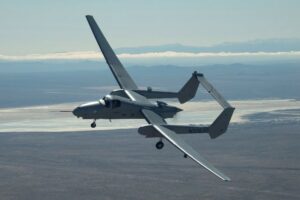
U.S. AIR FORCE PLANT 42 PALMDALE, Calif.—Northrop Grumman [NOC] said it has demonstrated a low-probability of intercept, anti-jam advanced data link for highly contested environments in information exchanged between a Scaled Composites' Proteus high altitude long endurance (HALE) drone and a Firebird optionally manned aircraft. In flight over the Mojave Desert on July 14, the Proteus located a ground target and provided an optical data link with continuous photos to a Firebird flying below the Proteus. Northrop Grumman then used…














